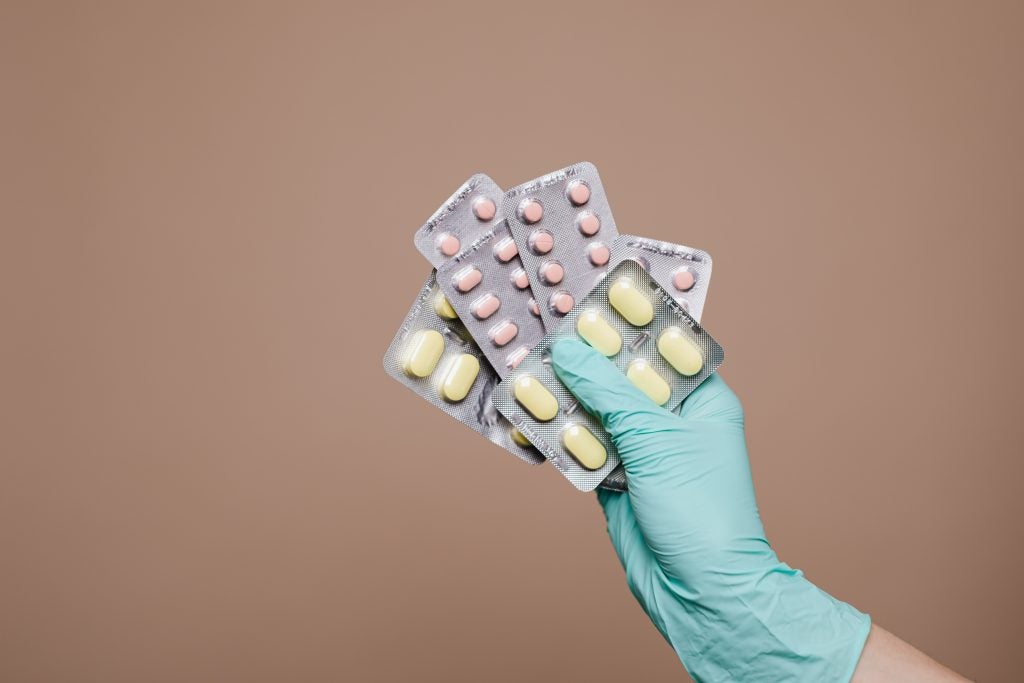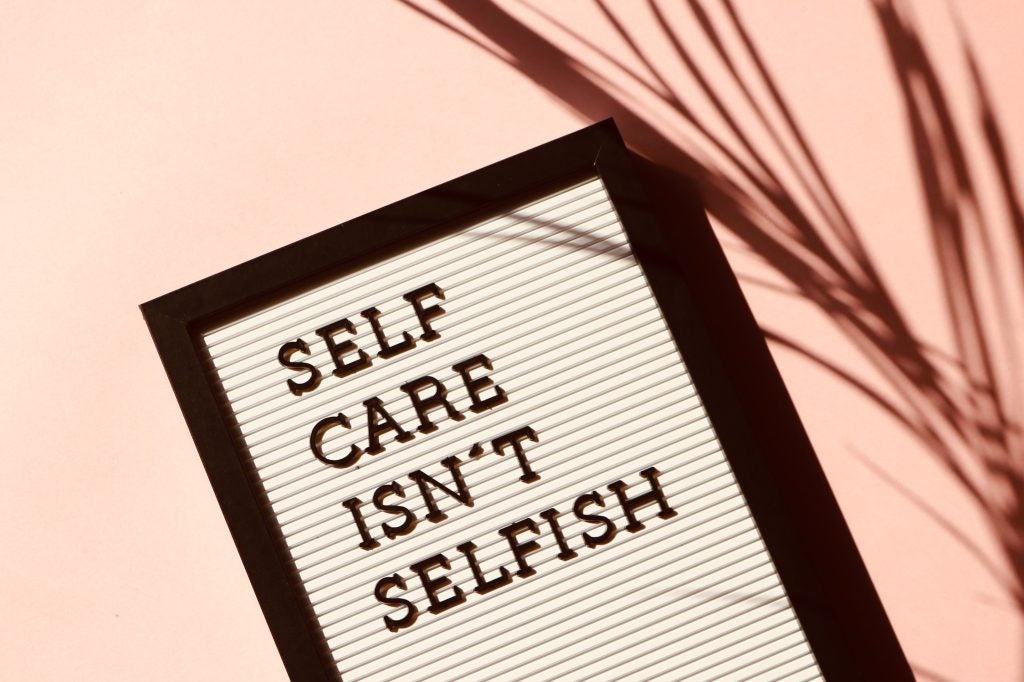
Anxiety disorders are a group of clinical diagnoses in which an abnormally high level of anxiety is the prominent symptom. These disorders include panic disorder, social anxiety, obsessive-compulsive disorder (OCD), post-traumatic stress disorder (PTSD), and generalized anxiety disorder. Anxiety disorders are the most common mental illness in the US, affecting 40 million adults in the United States age 18 and older, or 18% of the population.1 Anxiety is the common pathway by which social, psychological, biological, and moral factors converge to impair sexual response. The neurobiological expression of anxiety is complex, but it mainly involves a release of adrenergic substances, epinephrine and norepinephrine. Epinephrine and norepinephrine are the “fight or flight” hormones that are released when the body is under extreme stress. Sympathetic dominance also negatively affects arousal and orgasm phases and may decrease sexual desire.2 Sympathetic dominance refers to an overactive sympathetic nervous system. The sympathetic nervous system is the “fight or flight” adrenaline-based system, which is responsible for responding to stressful situations.3 It is the parasympathetic nervous system that is responsible for sexual arousal (among other things), which is why an overactive sympathetic nervous system can inhibit sexual response.3
Panic Disorder
Panic disorder affects about 6 million (2.7%) Americans. Women are twice as likely to be affected compared to men.1 Panic disorders are diagnosed in people who experience spontaneous panic attacks (also called anxiety attacks) and are preoccupied with the fear of a recurring attack. Panic attacks occur unexpectedly, sometimes even during sleep. Some signs and symptoms of panic attacks include:4
- Heart palpitations, pounding heart, or accelerated heart rate
- Sweating
- Trembling or shaking
- Shortness of breath
- A feeling of choking
- Numbness or tingling sensations
- Feeling dizzy, lightheaded, and faint
- Fear of losing control or “going crazy”
- Fear of dying
- Nausea or vomiting
- Derealization (feelings of unreality) or depersonalization (being detached from oneself)
- Chest pain or discomfort
Studies done by the Human Sexuality Program of the New York Hospital-Cornell Medical Center suggests that 75% of patients with a panic disorder also have a sexual dysfunction.2 Sexual aversion disorder (SAD) is the most common sexual dysfunction found in patients with panic disorder. SAD is the phobic aversion to and avoidance of sexual contact with a sexual partner, which causes personal distress and is the most severe form of sexual desire disorder. It involves a fear of sexual intercourse and an intense desire to avoid sexual situations completely.5 Sexual avoidance may also be caused by erectile dysfunction in males affected with panic disorder. A study of 60,949 patients with erectile dysfunction showed that men with panic disorder have an increased risk of erectile dysfunction.2
Social Anxiety
Social anxiety disorder affects more than 15 million Americans of all ages, races, and cultures, and it may be present in children as well as adults. It is characterized by having an intense fear of being negatively judged by others.6 People with social anxiety disorder often experience significant, irrational emotional distress in the following situations:7
- Being introduced to other people
- Being teased or criticized
- Being the center of attention
- Being watched while doing something
- Most social encounters, especially with strangers
People with social anxiety disorder may also have difficulty establishing interpersonal relationships, whether they’re friendships or romantic relationships. Physiologically, people with social anxiety may experience intense blushing, sweating, dry throat and mouth, difficulty swallowing, accelerated heart rate, and muscle twitches particularly around the nose and mouth areas.
Arousal disorders (loss of desire during sexual intercourse) and orgasm-ejaculation disorders are most common in males with social anxiety disorder. Some studies that have analyzed social anxiety disorders in male populations found a high prevalence of premature ejaculation, while others found a link with retarded ejaculation.2 It has also been found that people with social anxiety disorder experience less pleasure and less sexual satisfaction.2 Women with social phobia are more likely to have hypoactive sexual desire disorders, pain during sex, and a lower frequency of sexual thoughts and sexual intercourse than women without the disorder.
Obsessive-Compulsive Disorder (OCD)
Obsessive-compulsive disorder (OCD) is a serious, debilitating chronic anxiety disorder that causes people to have unwanted and intrusive thoughts, or obsessions. In an effort to ease their anxiety or distress, people with OCD often repeatedly perform ritualistic behaviors and routines, called compulsions.8 For example, sufferers who have a fear of germs and contamination may bathe and wash their hands many times throughout the course of one day, or they may obsess over thoroughly cleaning their home to ensure it is free of germs. Other obsessive behaviors include constant checking or counting, repeatedly washing hands or cleaning an item, or arranging items to face a certain way.9
The findings of a study published in the Brazilian Journal of Psychology indicate that male patients are more likely than females to be single and to present early onset of symptoms and chronic course of the disorder. This means that typically, men show symptoms of OCD earlier than women do and live with it for longer periods of time. This study also found that men tend to experience greater social impairment, to have more sexual-religious and aggressive symptoms, and to exhibit greater comorbidity with tic and substance use disorders.10 Comorbidity refers to the presence of two chronic diseases in one patient at the same time. Female patients present more contamination/cleaning symptoms and greater comorbidity with eating and impulse-control disorders.10
39% of women with OCD experience sexual dysfunction. Patients may report sexual disgust, the absence of sexual desire, very low sexual arousal, anorgasmia, and high avoidance of sexual intercourse.2 Patients with OCD show severe impairment in interpersonal relationships, both platonic and sexual. They tend to perceive themselves as less sensual in comparison to patients with other anxiety disorders. This leads to a low level of sexual pleasure and a strong dissatisfaction with their sexuality. 73% of women with OCD experience these symptoms.2
Post-Traumatic Stress Disorder (PTSD)
Individuals who have lived through a shocking, dangerous, or traumatic event may develop PTSD. It is natural to experience a “fight or flight” response in a stressful situation and it is normal to experience a range of reactions after trauma, but patients with PTSD continue to experience symptoms. To be diagnosed with PTSD, an adult must experience at least one re-experiencing symptoms, at least one avoidance symptom, at least two arousal and reactivity symptoms, and at least two cognition and mood symptoms.11 Re-experiencing symptoms include flashbacks, nightmares, or frightening thoughts. Avoidance symptoms are characterized by staying away from places, events, or objects that serve as a reminder of the traumatic event, feeling emotionally numb or a strong sense of guilt, or even having trouble remembering the traumatic event. Arousal and reactivity symptoms include being easily startled, feeling tense or on edge, having difficulty sleeping, and having angry outbursts. Cognition and mood symptoms are characterized by negative thoughts about oneself or the world, distorted feelings like guilt or blame, or loss of interest in activities that used to be enjoyable.11
PTSD affects emotional, social, professional, and sexual life. Male patients with PTSD often have erectile dysfunction (prevalence of about 69% in combat veterans with PTSD) and problems with orgasm, and thus report a low level of sexual satisfaction.2 Sometimes a patient will develop PTSD after a sexual assault, which can cause or accompany sexual problems. People who have been sexually assaulted can be afraid of and avoid sexual intimacy.12 They may also experience an overall decrease in sexual interest and desire.12
Generalized Anxiety Disorder (GAD)
Generalized anxiety disorder affects 6.8 million adults, or 3.1% of the US population. Women are twice as likely to be affected.13 The disorder comes on gradually and can begin at all ages, though the risk is highest between childhood and middle age. GAD is characterized by persistent, excessive, and unrealistic worry about everyday things. People with the disorder anticipate disaster and may be overly concerned about money, health, family, work, or other issues.13 To be diagnosed with generalized anxiety disorder, a patient must experience one or more of the following symptoms more days than not for at least six months:14
- Feeling restless, wound up, or on edge
- Being easily fatigued
- Having difficulty concentrating or having their mind go blank
- Being irritable
- Having muscle tension
- Having difficulty controlling worry
- Having difficulty falling or staying asleep or restless, unsatisfying sleep
Many people suffering from generalized anxiety disorder experience a lack of sexual feelings and a disinterest in sex. General distress, mental distractions, and fatigue are all symptoms of anxiety and causes for low libido.
Anti-Anxiety Medications and Sexual Side Effects
Selective Serotonin Reuptake Inhibitors (SSRIs)

Fluoxetine, citalopram, and paroxetine are all SSRI medications that help treat anxiety. SSRIs work by blocking serotonin reuptake, increasing the levels of serotonin in the brain. Higher levels of serotonin help to improve a patient’s mood.15 SSRIs can cause most forms of sexual dysfunction, but most commonly patients taking an SSRI experience dysfunctions involving sexual arousal, orgasm, and libido.16 These medications cause sexual dysfunction by inhibiting the production of nitric oxide, which is the main mediator of both the male and female sexual arousal response. Nitric oxide is a neurotransmitter that widens blood vessels to allow more blood flow into the penis and clitoris, the erectile tissues of males and females, respectively. This leads to complaints of vaginal dryness, diminished genital sensation, and often times orgasmic difficulty.16
Potential treatments for SSRI induced sexual dysfunction include:16
- Decreased dosage regimens: decreasing the daily dosage may resolve or significantly reduce the sexual side effects. If the patient’s complaint is delayed orgasm or anorgasmia, the patient can be instructed to time intercourse either soon before or soon after taking their SSRI dosage. This timing allows for the drug level to be at its lowest during intercourse, hopefully decreasing sexual side effects.
- Drug holiday: a drug holiday is taking a two day break from medication in order to lessen sexual side effects and plan intercourse during that period of time. The idea first emerged when patients informed their physicians that they had tried stopping their medication for a day or two and that this resulted in an improvement of sexual functioning without a worsening of depressive symptoms. Due to this finding, a study was performed to determine whether drug holidays were effective strategies for treating SSRI-induced sexual dysfunction. The patients taking sertraline and paroxetine reported improved sexual functioning, while the patients on fluoxetine did not. None of them experienced a worsening of their symptoms.
- Pharmacological antidotes: although not approved by the FDA for this particular use, numerous pharmacologic agents have been successfully used for treatment of sexual dysfunction caused by SSRIs. However, most of the information obtained regarding these antidotes has come from anecdotal case reports and not double-blind comparative studies which means the data is significantly less reliable.
Some patients report that sexual dysfunction decreases over time, also known as spontaneous remission. However, this data is limited and it seems as though improvements occur when the initial complaints are mild and associated with delayed orgasm, rather than desire or arousal disorders.
Serotonin-Norepinephrine Reuptake Inhibitors (SNRIs)
The serotonin-norepinephrine reuptake inhibitors (SNRIs) are notable for a dual mechanism of action: they increase the levels of both the neurotransmitters serotonin and norepinephrine by inhibiting their reabsorption into cells in the brain.15 Venlafaxine (Effexor) and duloxetine are two examples. These medications are considered as effective as SSRIs, so they are also considered a first-line treatment, particularly for the treatment of generalized anxiety disorder.15 SNRIs cause sexual dysfunctions similar to SSRIs.
Benzodiazepines
This class of drugs is frequently used for short-term management of anxiety. Benzodiazepines (alprazolam, clonazepam, diazepam, and lorazepam) are highly effective in promoting relaxation and reducing muscular tension and other physical symptoms of anxiety. Due to habituation, long-term use may require increased doses to achieve the same effect, which may lead to problems related to tolerance and dependence.15 Benzodiazepines are strongly linked to erectile dysfunction in men. Men taking benzodiazepines to treat anxiety were also more than two times as likely to have erectile dysfunction. Nearly half of men who had taken a benzodiazepine in the last month had erectile dysfunction, compared to about a quarter of men who had not taken the drug.17
Tricyclic Antidepressants
Concerns about long-term use of the benzodiazepines leading to dependence and addiction led many doctors to favor tricyclic antidepressants (amitriptyline, imipramine, and nortriptyline). Although effective in the treatment of anxiety, they can cause significant side effects, including orthostatic hypotension (drop in blood pressure upon standing), constipation, urinary retention, dry mouth, and blurry vision.15 Another side effect in men is erectile dysfunction. Among 60 men who had taken a tricyclic antidepressant in the last month, nearly half also qualified as having erectile dysfunction. In contrast, one quarter of the men who had not taken a tricyclic had erectile dysfunction.17
Concluding Remarks

Having a sexual dysfunction is very common and is nothing to be embarrassed about. Mental health care is just as important as physical health care and people should not be afraid to take these beneficial medications due to their side effects. Please feel free to contact the Sexperts here if you have any questions. If you or a loved one are experiencing any symptoms of any of the anxiety disorders mentioned in this article, contact your doctor or mental health care provider. Here are some resources:
United States National Suicide Hotline: 1 (800) 273-8255 crisis call line 24 hours a day 7 days a week or visit https://suicidepreventionlifeline.org/
United States National Institute of Mental Health Information Center: 1 (866) 615-6464 Monday through Friday, 8am-8pm (EST) or visit http://www.nimh.nih.gov/index.shtml
References
1. “Facts & Statistics.” Anxiety and Depression Association of America. Anxiety and Depression Association of America, Sept. 2014. Web. 17 Apr. 2016.
2. Baldi, Irene, MD, and Giorgio Corretti, MD. “The Relationship Between Anxiety Disorders and Sexual Dysfunction.” Psychiatric Times. UBM Media, 1 Aug. 2007. Web. 17 Apr. 2016.
3. Schierling, Russel. “Sympathetic Dominance and the Relationship to Sickness, Disease, and Chronic Pain.” DR. RUSSEL SCHIERLING. Schierling Chiropractic, 21 Aug. 2013. Web. 17 Apr. 2016.
4. “Panic Disorder & Agoraphobia.” Anxiety and Depression Association of America. Anxiety and Depression Association of America, Apr. 2016. Web. 17 Apr. 2016.
5.”Sexual Aversion Disorder (SAD).” Sexual Health Australia. SS Bootstrap, n.d. Web. 17 Apr. 2016.
6. “What Is Social Anxiety Disorder?” Anxiety and Depression Association of America. Anxiety and Depression Association of America, n.d. Web. 19 Apr. 2016.
7. Richards, Thomas A., PhD. “What Is Social Anxiety?” Social Anxiety Institute. Social Anxiety Institute, 2016. Web. 19 Apr. 2016.
8. “Understanding OCD.” Anxiety and Depression Association of America. Anxiety and Depression Association of America, n.d. Web. 19 Apr. 2016.
9. “Obsessive Compulsive Disorder Symptoms, Causes, and Effects.” PsychGuides.com. Sovereign Health, .d. Web. 20 Apr. 2016.
10. De Mathis, Maria Alice, Pedro de Alvarenga, Guilherme Funaro, Ricardo Cezar Torresan, Ivanil Moraes, Albina Rodrigues Torres, Monica L. Zilberman, Ana Gabriela Hounie. “Gender Differences in Obsessive-Compulsive Disorder: A Literature REview.” Revista Brasileira De Psiquiatria 33.4 (2011): n. pag. SciFlo Brasil. Dec. 2011. Web. 20 Apr. 2016.
11. “Post-Traumatic Stress Disorder.” National Institute of Mental Health. National Institute of Mental Health, Feb. 2016. Web. 20 Apr. 2016.
12. “Sexual Assault Against Females.” PTSD: National Center for PTSD. US Department of Veterans Affairs, 13 Aug. 2015. Web. 20 Apr. 2016.
13. “Generalized Anxiety Disorder (GAD).” Anxiety and Depression Association of America. Anxiety and Depression Association of America, Oct. 2015. Web. 17 Apr. 2016.
14. “Anxiety Disorders.” National Institute of Mental Health. National Institute of Mental Health, Mar. 2016. Web. 20 Apr. 2016.
15. “Medication.” Anxiety and Depression Association of America. Anxiety and Depression Association of America, n.d. Web. 20 Apr. 2016.
16. “Sexual Side Effects, Potential Treatment Strategies of SSRI Medications for Depression.” Berman Sexual Health. Vibrance Network, n.d. Web. 20 Apr. 2016.
17. Grens, Kerry. “Benzodiazepines, Antidepressants Linked to Impotence.” Psych Congress Network. North American Center for Continuing Medical Education, 30 May 2013. Web. 20 Apr. 2016.
Last Updated: 21 May 2016
